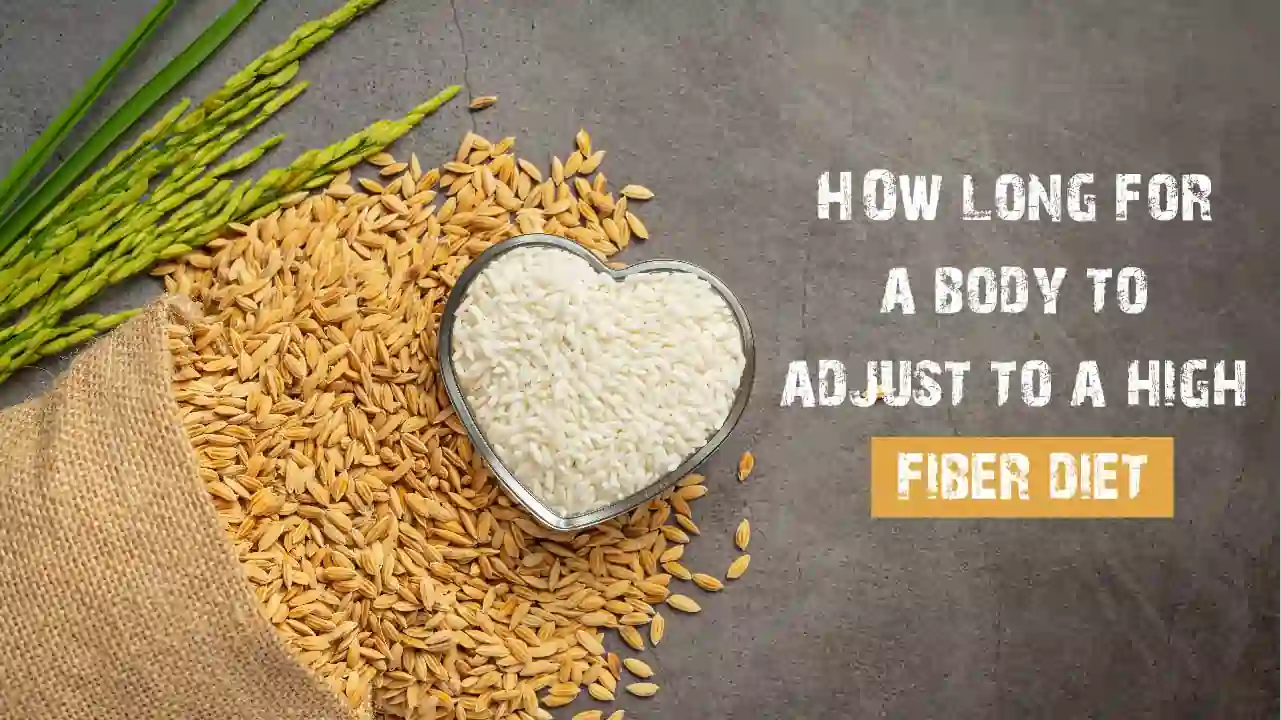Plant-based foods are found to be high in fiber and fiber is essential for our body. People looking for weight loss usually go high on fiber. But there is an ideal amount of fiber that needs to be consumed, not less, not more. A sudden change in your diet from low to high fiber can take time for your body to get used to it. And how long does it take? That we’ll have to dig out in this article.

What is a high fiber diet?
Fiber is a source of energy and a type of complex carbohydrate that is crucial for our body to function properly. Fiber is an integral part of plant-based foods. A diet that requires you to go high on fiber via the consumption of such foods is known as a high-fiber diet.
A high-fiber diet isn’t a typical diet plan but a part of a lifestyle. It is recommended for the ones who usually do not consume enough fiber and face difficulties during digestion. Consumption of fiber smooths bowel movements and helps treat constipation.
Fiber is such a carb that does not get dissolved until it reaches your large intestine. After landing there, the fate of fiber is decided, whether it’ll be soluble, insoluble, or prebiotic fiber. Soluble fibers immediately get dissolved in the water and help in promoting a healthy heart while insoluble fiber does not get dissolved but prevents constipation by helping stool pass quickly from the intestines. Prebiotic fiber takes care of the microbiome of our intestines by keeping bad bacteria at bay.
What does a high fiber diet include?
As the name suggests, the diet requires you to eat foods rich in fiber. There are a lot of diverse options from which you can choose. An ideal amount of daily fiber intake for women is around 25 g and for men, it is around 38g. And to fulfill this requirement, you need to consume a lot of plant-based foods, which are considered rich in fiber.
The common food items rich in fiber are all sorts of fruits, vegetables, grains, legumes, seeds, and nuts. They can be consumed together in small proportions or you can have them alternatively in a week.
Health benefits of high-fiber food
Healthy eating never goes in vain and provides immense health benefits. High-fiber foods are for everyone except for some, due to medical reasons. Following are some of the useful aspects of a high-fiber diet that its followers enjoy.
- Helps in weight loss
- Then it helps in maintaining that ideal weight
- Helps you feel satiated
- Make constipation go away
- Maintains bowel health and its movements
- Reduces the odds of heart diseases
- Your cholesterol goes down
- And your energy level goes up
- Your skin glows
- Helps in decreasing the inflammation and bloating
- Improve sleep quality
- Improved regulation of blood sugar level
- Feeds the good bacteria in your intestine
- Reduces the risk of cancers
- Increase your average lifetime
- Act as a natural detox of the body
How long does it take for a body to adjust to a high-fiber diet?
Even though high-fiber foods provide numerous health benefits, adjusting your body to a high-fiber diet can take a little time. According to studies, people who consume very less or no fiber at all in their daily diet find it really hard to adjust their bodies to this new diet regime.
When someone switches from a normal diet to a high-fiber diet, they usually experience unpleasant symptoms like bloating, abdominal pain, fatigue, headaches, and abdominal gas. However, these symptoms won’t last long, and as soon as your body adapts to this new diet plan, you’ll feel much better.
As everybody responds differently to every diet plan, there is no definite answer to the question of how long your body will take to adjust to a high-fiber diet. However, a general idea is if you are already consuming some fiber in your daily diet, then your body will adjust to a high intake of fiber in 2 to 3 days. If you are someone who has been avoiding plant-based foods for a long time, your body will take a week or more to adjust.
What happens when your body gets comfortable with a high-fiber diet?
In short, all good vibes. Once you feed enough fiber to your body, it will start the cycle of health benefits that will go a very long way. Fiber gets digested slowly in our system quite slowly and releases energy at a similar pace. Once the fiber accommodation period is over, your digestive system will improve, and you will eventually experience sustainable weight loss that will be easy to maintain while on a high-fiber diet. But, it’s necessary to know that excess consumption of fiber is never recommended, but a moderate amount of it.
Conclusion
Fiber is good in all of its shapes whether it’s soluble, insoluble, or prebiotic. Not only does it protect your heart, but it also helps with the digestion process and makes a symbiotic relationship with the bacteria in our gut as well. Just remember, going too low or too high on fiber can backfire so always keep the fiber intake in optimal amounts.

I look up to fitness as a lifestyle and love to pen down about it. I have 2 years of experience in content writing and I am here to share my research and knowledge on health and fitness.













